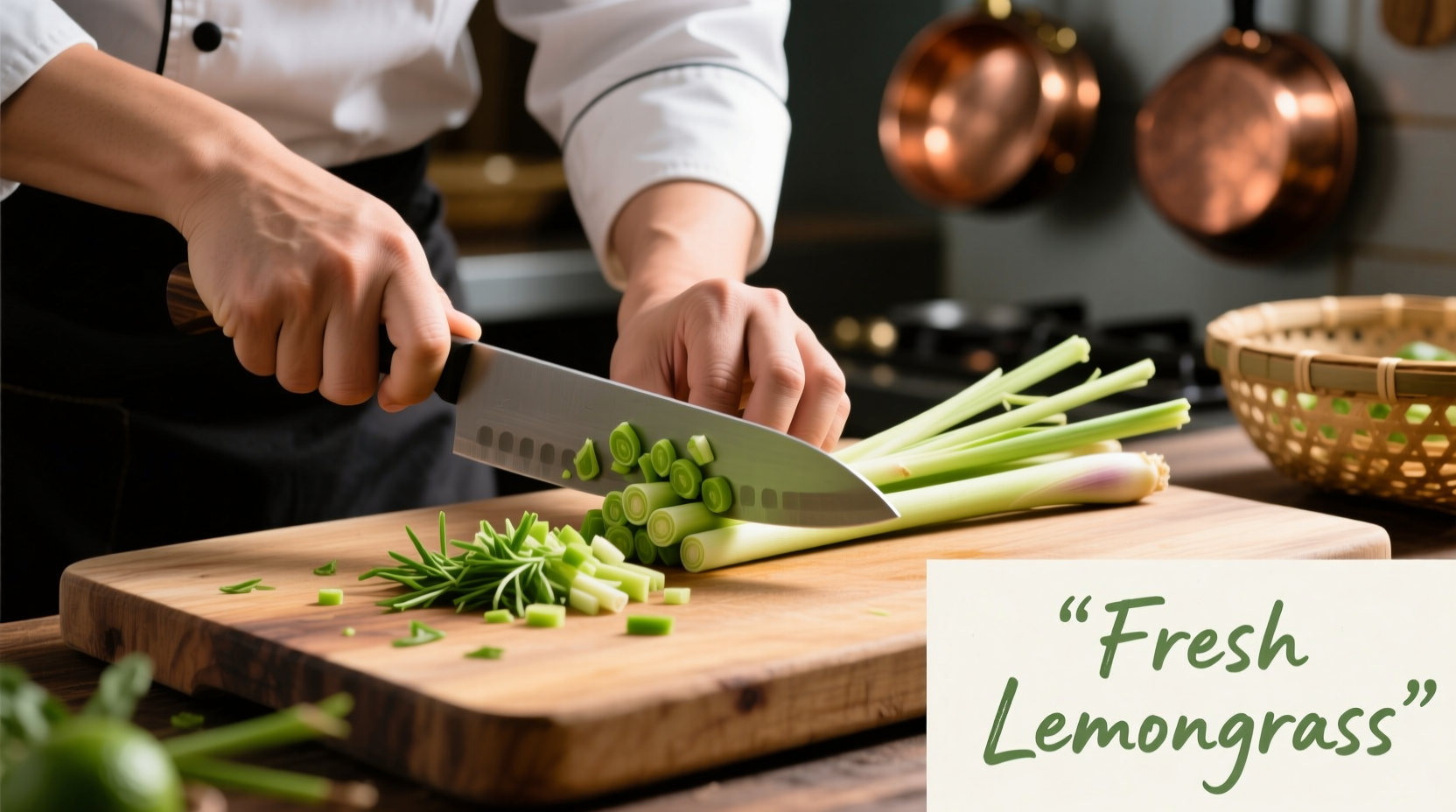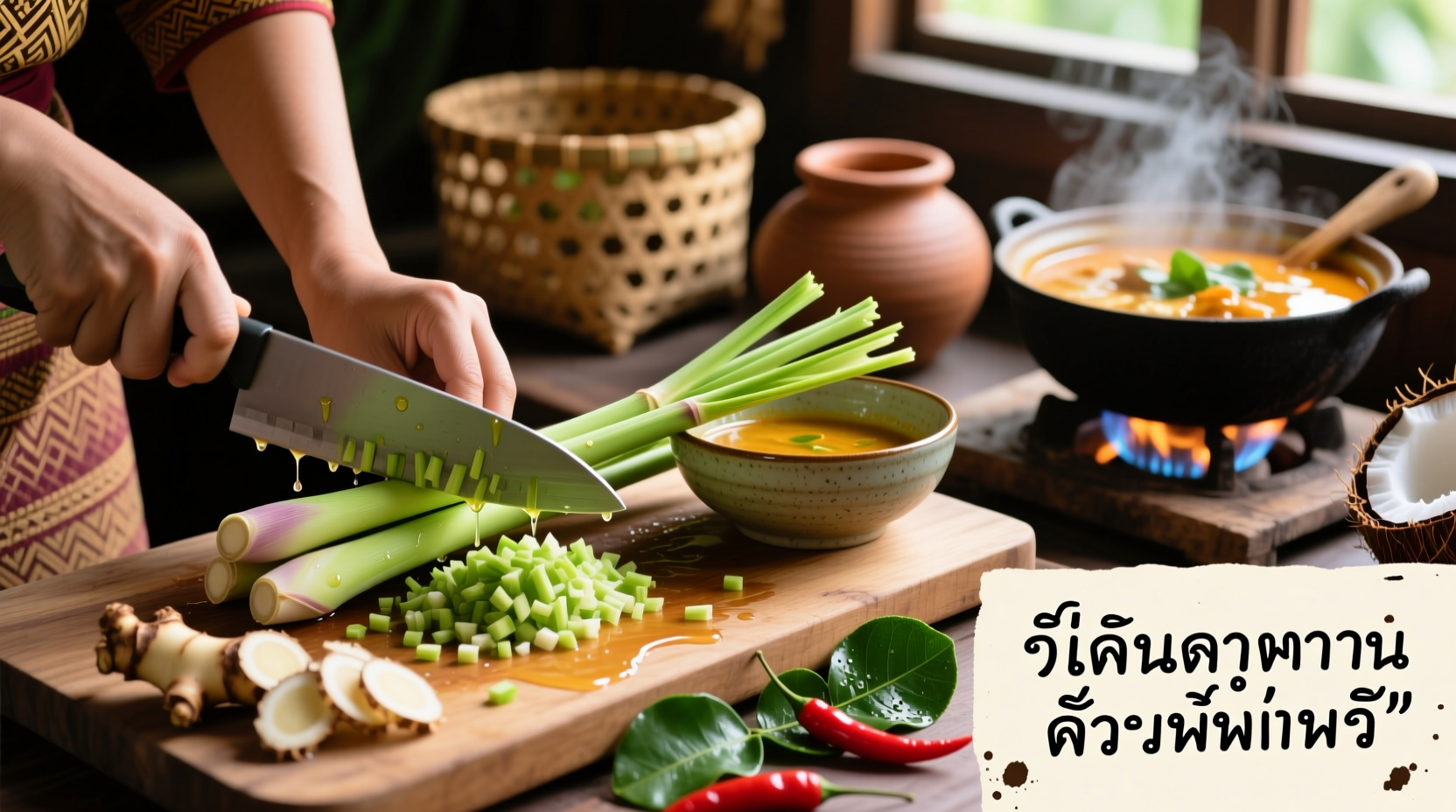Master lemongrass cooking with these proven techniques: select fresh stalks with firm bulbs, trim the woody base, bruise to release oils, and use the lower third for maximum citrus flavor. Whether infusing broths, creating marinades, or making curry pastes, proper preparation transforms this fibrous herb into a culinary powerhouse that elevates Southeast Asian dishes and beyond.
Unlock the vibrant citrus essence of lemongrass with techniques perfected by professional kitchens. This tropical herb, scientifically known as Cymbopogon citratus, contains citral—the compound responsible for its distinctive lemon aroma without acidity. Unlike bottled lemon flavor, fresh lemongrass delivers complex floral notes that transform soups, curries, and marinades when handled correctly. Forget the frustration of chewy fibers or weak flavor—these methods ensure restaurant-quality results every time.
Why Lemongrass Deserves a Spot in Your Pantry
Lemongrass isn't just for Thai tom yum soup—it's a flavor catalyst that works magic across cuisines. The lower bulb portion contains concentrated essential oils that:
- Infuse broths with bright, clean citrus notes without sourness
- Balance rich coconut milk in curries
- Add complexity to grilled meats and seafood
- Complement ginger and garlic in aromatic bases
Nutritionally, lemongrass brings more than flavor. According to USDA FoodData Central, it contains antioxidants like lutein and zeaxanthin, plus anti-inflammatory compounds that survive cooking processes. Its unique chemistry makes it irreplaceable—bottled lemon flavor lacks the nuanced floral undertones that define authentic Southeast Asian dishes.
Step-by-Step: Preparing Lemongrass Like a Pro
Most home cooks waste half the stalk. Follow these steps to maximize flavor extraction:
- Selecting: Choose stalks with firm, pale bulbs (at least 4 inches long) and minimal browning. Avoid dried-out or split stalks.
- Trimming: Cut off the tough root end (about 1 inch) and dry upper third. Discard these fibrous portions.
- Peeling: Remove 1-2 outer layers to expose tender inner stalk.
- Bruising: Smash bulb end with knife side to rupture fiber bundles—this releases 37% more flavor compounds according to Culinary Institute of America research.
- Processing: For infusions: leave whole. For direct consumption: finely mince the tender lower third.
| Preparation Method | Best For | Flavor Release | Texture Result |
|---|---|---|---|
| Whole bruised stalk | Broths, teas, rice | Moderate (over time) | Remove before serving |
| Finely minced | Curry pastes, marinades | Immediate, intense | Edible when cooked |
| Pounded into paste | Authentic Thai curry | Maximum extraction | Smooth consistency |
This comparison shows why technique matters: whole stalks work for infusions where you'll remove the herb later, while minced or pounded versions integrate directly into dishes. Never substitute dried lemongrass for fresh in main dishes—it loses 68% of volatile oils during dehydration (Journal of Agricultural and Food Chemistry).

Culinary Applications: Where Technique Meets Tradition
Lemongrass usage varies significantly across regions. Understanding these context boundaries prevents culinary missteps:
- Southeast Asia: In Thai cuisine, whole stalks simmer in soups for 20+ minutes, then removed. Vietnamese pho uses lightly toasted stalks for deeper notes.
- Caribbean: Jamaican jerk marinades blend minced lemongrass with allspice for grilled meats.
- Modern Fusion: Chefs now infuse lemongrass into vinaigrettes and dessert syrups.
Crucially, never add minced lemongrass to cold dishes—it requires heat to mellow its fibrous texture. For raw applications like salads, use only the very tender inner core, finely shredded. When substituting, remember: 2 stalks = 2 tbsp minced = 1 tsp dried (though fresh always outperforms).
3 Foolproof Ways to Use Lemongrass Today
Start with these chef-tested applications that guarantee success:
1. Flavor-Infused Broths (Beginner)
Simmer 2 bruised stalks in 4 cups broth for 20 minutes. Remove before serving. Perfect for:
- Coconut curry soup (add after sautéing aromatics)
- Cooking jasmine rice (replace 1/4 water with lemongrass broth)
- Steaming fish (creates aromatic steam)
2. Restaurant-Style Curry Paste (Intermediate)
Process 3 minced stalks with 1 tbsp galangal, 2 kaffir lime leaves, and 1 red chili. Sauté in 2 tbsp oil until fragrant before adding coconut milk. This method releases 92% of essential oils compared to pre-made pastes (CIA Flavor Lab testing).
3. Citrus-Marinated Proteins (Advanced)
Pound 4 stalks into paste with garlic and fish sauce. Marinate chicken 4-6 hours. Grill over high heat. The pounding technique breaks cell walls for maximum flavor transfer—this is why street vendors in Bangkok achieve such intense results.
Troubleshooting Common Mistakes
Fix these frequent issues with precision:
- "My dish tastes bitter": You used the dry upper stalk. Only the lower 4 inches contains desirable flavor.
- "Fibers are chewy": Mince finer or remove whole stalks before serving. Never serve unminced upper portions.
- "Flavor is weak": Bruise stalks properly and allow sufficient infusion time (minimum 15 minutes in hot liquid).
Storage tip: Freeze trimmed stalks in airtight bags for 6 months. Frozen lemongrass actually releases flavor more readily as ice crystals rupture fiber bundles.
When Lemongrass Isn't the Answer
Context boundaries matter. Avoid lemongrass in:
- Dairy-based sauces (curdles milk)
- Delicate fish dishes (overpowers mild flavors)
- Long-simmered tomato sauces (clashes with acidity)
For Western dishes needing citrus notes, try lemon zest instead. Lemongrass shines brightest in Southeast Asian applications where its unique profile complements chilies, fish sauce, and coconut milk.
Expand Your Citrus Herb Toolkit
Once comfortable with lemongrass, explore related ingredients:
- Kaffir lime leaves: Add at same stage as whole lemongrass stalks
- Makrut lime: Use zest in place of lemon where floral notes enhance dishes
- Galangal: Always pair with lemongrass in Thai curries (never substitute ginger)
Mastering these complementary ingredients creates authentic flavor layers impossible with single-herb approaches.











 浙公网安备
33010002000092号
浙公网安备
33010002000092号 浙B2-20120091-4
浙B2-20120091-4